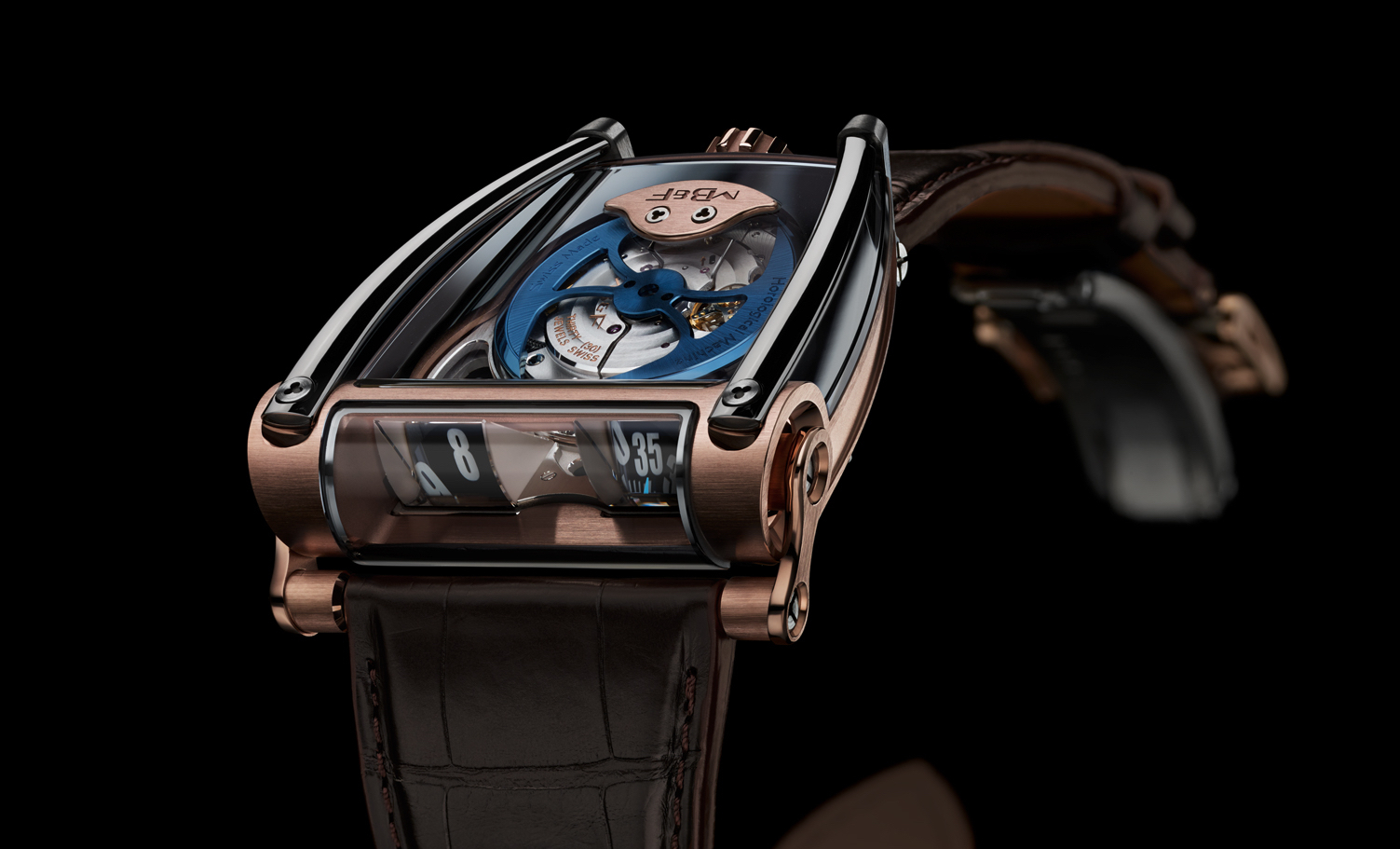This the new MB&F HM8 Can-Am, with a design that correlates with Maximilian Büsser’s love of Can-Am race cars from the 1960s and 1970s. Specifically, the polished roll bars link the HM8 to Can-Am supercars.
According to MB&F, “At first glance it may appear that the sapphire crystal covering the HM8 Engine is circular and positioned above the battle-axe rotor, but it’s not. The complete top of the case is one piece of sapphire crystal with sections of the crystal metallized to create a bluish border. That crystal, combined with the polished roll bars on each side, the oil sumps underneath, and the time displays created by optical prisms highlight HM8’s unrestricted horological creativity.”
The roll bars are in grade 5 titanium, milled from a solid block of titanium Ti-6Al-4V, a blend of pure titanium with 6% aluminum and 4% vanadium as well as trace amounts of iron and oxygen. The Ti-6Al-4V alloy is significantly stronger than commercially pure titanium and features an excellent combination of lightness, strength, and resistance to corrosion.
The HM8 Can-Am is powered by an in-house developed bi-directional jumping hour and trailing minute indication module, on a Sowind base movement. The movement is inverted to put the winding rotor on top and modified to drive the prism indicator module. The power reserve is 42 hours.
The bi-directional jumping hour and trailing minute displays on HM8 feature overlapping discs (one for the hours, one for the minutes), completely covered in luminescent material.
Interestingly, the discs rotate horizontally, visible the top of the movement, yet the time is indicated vertically in what the company calls the “dashboard.”
To achieve this, MB&F worked with a high-precision optical glass supplier to develop reflective sapphire crystal prisms that reflect light from the discs at 90 degrees. Moreover, the prisms also magnify the indications by 20% to maximize legibility.
HM8 has separate sapphire crystal prisms for the hour and minute displays, which are wedge-shaped with precisely calculated angles to ensure that light is reflected (and reversed) from the horizontal indications to the vertical rather than refracted (bent). A convex lens at the front provides the magnification.
Sapphire crystal is much more difficult to work with compared to optical precision than glass, and it took considerable development and meticulous care in production to create crystals that reflected and magnified light without the slightest distortion. Because the time is reflected, the numbers are printed on the discs as mirror images so that they display correctly.
From the roll bar inspired elements to the engine block style underside to the display configuration setup in a way where you can view the time without lifting your wrist from the steering wheel – there is no question the HM8 Can-Am is a driver’s watch.
















